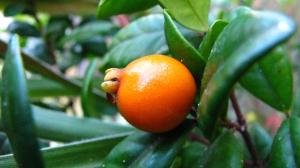‘Plant smoothie’ helps protect endangered endemic Hawaiʻi plant species
University of Hawaiʻi at MānoaLink to video (details below): https://bit.ly/3mQT3BX
The future of an already critically endangered species of tree that is endemic to Hawaiʻi is being threatened by myrtle rust, a pathogen only recently detected in the islands. However, University of Hawaiʻi at Mānoa researchers from the School of Life Sciences, have discovered a “plant smoothie” that has been demonstrated to make the tree more resistant to the pathogen. The research was published on September 29 in Phytobiomes Journal.
Rust pathogen invasion
Eugenia koolauensis, commonly known as Koʻolau eugenia or nioi, belongs to the same family as ʻōhiʻa lehua. Researchers estimate there are fewer than 100 trees in the wild. They say the species was not doing well to begin with, and to add the recent rust invasion is extremely disheartening.
Myrtle rust, or ohia rust as it’s known locally, is believed to have come to Hawaiʻi from the Southern Hemisphere, possibly Australia, where it has attacked other similar plant species. Not only can it kill the plant, but the rust pathogen also infects its reproductive tissues preventing it from reproducing. Experts from the Oʻahu Army Natural Resources Program are growing the Eugenia koolauensis in a greenhouse, however, once they are planted into the wild, they get hit with the rust pathogen.
Challenges
Led by School of Life Sciences Associate Professor Anthony Amend, and master of science alumnus Kama Chock, the researchers initially faced challenges trying to help the plant survive. Typically, scientists might breed resistant individuals, but this method is not feasible for nioi because there are so few of the plants remaining that genetic diversity is low. Using chemical pesticides is ineffective, because it’s difficult to access the plants deep in the forest. Even in cases where the use of pesticides is plausible, such as in a greenhouse, these will also kill beneficial symbiotic fungi, which might lead to weaker plants that are maladapted to nature environments.
Solution
The team discovered a successful method of collecting leaves from healthy rose apples, which are closely related, and essentially putting them into a blender and applying the “plant smoothie” to the Koʻolau eugenia to inoculate them with wild fungi. The researchers then challenged the plant with the rust pathogen and found that the complex consortium of wild fungi reduced the plant’s disease by more than 50%. Microscopy showed that some unidentified fungus was attacking the spores of the myrtle rust.
“Probiotics has become popular in human health, and by extending this idea to plant conservation, we hope to improve the health and fitness of Eugenia koolauensis,” Amend said. “The next step is to determine precisely how the probiotic application works. Science tends to place a premium on simple, well controlled experiments. I think the smoothie application shows that it can be helpful to embrace the full complexity of natural microbial systems to achieve conservation goals.”
VIDEO BROLL: (1:20)
0:00-0:06 - Images of Eugenia koolauensis, commonly known as Koʻolau eugenia or nioi
0:06-0:24 - Images of Eugenia koolauensis, commonly known as Koʻolau eugenia or nioi (photo credit: David Eickhoff)
0:24-0:36 - Images of Eugenia koolauensis, with rust pathogen (photo credit: David Eickhoff)
0:36-0:42 - Photos of the rust pathogen, A) Rust spores emerge from a lesion on an infected plant (photo credit: Benjamin Hoyt)
0:42-0:48 - Photos of the rust pathogen, B) Unidentified fungus appears to surround and feed on rust spores. (photo credit: Benjamin Hoyt)
0:48-1:20 - Video/photos of a “plant smoothie” similar to the one created for Eugenia koolauensis

